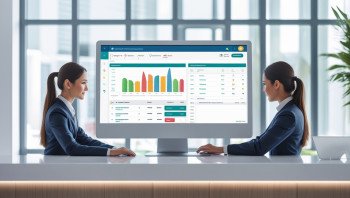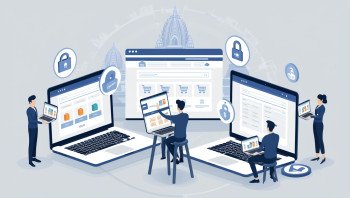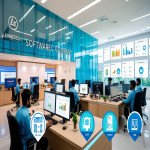Restaurant Management
Software: A Detailed Overview
In the fast-paced and highlycompetitive foodservice industry, the need for efficient, seamless, andcustomer-centric operations has never been more critical. Restaurants, whetherlarge or small, need a comprehensive system that handles everything from managingreservations and staff to keeping track of inventory and processing payments.Restaurant management software (RMS) has emerged as an essential tool forensuring smooth and effective restaurant operations, helping owners and
managers optimize their business practices, improve customer experiences, and
drive profitability.
What is Restaurant Management
Software?
Restaurant management software is an integrated platform designed to streamline and automate various operationalaspects of a restaurant. It serves as a central hub for managing the front-end
(customer-facing) and back-end (internal operations) of the restaurant, making
it easier to handle reservations, order processing, menu management, inventory,
payroll, and more. RMS combines several functionalities to facilitate
day-to-day restaurant tasks, and it is often designed to be user-friendly and
accessible through devices like tablets, smartphones, and desktop computers.
Key Features of Restaurant
Management Software
Point of Sale (POS) System
The Point of Sale system is one of the most critical components of restaurant
management software. It allows staff to take orders and process payments
quickly and accurately. A modern POS system integrates seamlessly with other
restaurant operations, such as inventory tracking, menu management, and
reporting. It enables waitstaff to input orders directly into the system,
speeding up the ordering process and minimizing errors. Additionally, POS
systems can accept a variety of payment methods, including cash, credit cards,
and digital wallets, ensuring flexibility for customers.
Reservation and Table
Management A restaurant’s ability to manage reservations efficiently is
crucial for providing a smooth customer experience. RMS typically includestools to manage customer reservations, table assignments, and waitlists.
Customers can book tables in advance through an online reservation system,
while staff can track availability in real time. This ensures that restaurants
maximize their seating capacity and prevent overbooking or underutilization of
tables. Additionally, these systems allow restaurants to customize settings
such as time limits for table bookings, special requests, and VIP reservations.
Menu Management The
ability to modify, update, or create menus is another vital feature of RMS.
Restaurants can update prices, item descriptions, and ingredients in real time, ensuring consistency across the entire restaurant. Menu management tools allowoperators to create dynamic menus that reflect special promotions, seasonal dishes, or even price changes based on market conditions. The system can also provide insights into popular items, enabling managers to make data-driven excisions regarding menu offerings.
Inventory Management Efficient
inventory management is essential for controlling costs and maintaining food
quality. RMS typically includes an inventory tracking feature that keeps tabs
on stock levels, supplies, and ingredients in real-time. Restaurant managers
can monitor inventory, place orders for necessary ingredients, and receive
alerts when stock is running low. This helps prevent waste, ensures the
restaurant is never out of essential items, and keeps operating costs under
control. Some advanced systems also integrate with suppliers to streamline the
ordering process.
Employee Management
Customer Relationship
Management (CRM) Understanding and responding to customer needs is
essential for driving loyalty and repeat business. CRM tools within RMS allow
restaurants to track customer preferences, order history, and feedback. By
using customer data, restaurants can personalize interactions, offer targeted
promotions, and improve service delivery. Furthermore, the integration of
loyalty programs and rewards systems encourages customers to return, increasing
the lifetime value of each guest.
Reporting and Analytics A
restaurant's ability to analyze its operations is crucial for identifying
trends, improving performance, and optimizing profitability. RMS typically
includes robust reporting and analytics tools that offer insights into sales,
customer behavior, inventory turnover, and employee performance. Managers can
generate detailed reports on daily, weekly, and monthly performance, helping
them make informed decisions about everything from staffing levels to menu
adjustments.
Benefits of Using Restaurant
Management Software
Increased Efficiency By automating various
Improved Customer Experience
Restaurant management software helps improve service quality by ensuring orders
are processed accurately, reservations are managed smoothly, and customers’
preferences are tracked. By reducing wait times, minimizing order errors, and
offering personalized experiences, restaurants can enhance customer
satisfaction and build loyalty.
Restaurant management software is a game-changer for businesses in the foodservice industry. By integrating various operational functions into one platform, RMS enables restaurants to streamline processes, improve customer experiences, and optimize profitability. Whether managing a single-location café or a multi-site restaurant chain, RMS offers tools and insights that help managers make informed decisions, enhance service quality, and ultimately succeed in a competitive marketplace. Astechnology continues to advance, the role of restaurant management softwarewill only become more critical in the pursuit of operational excellence.











